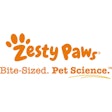
Sustainability can either be a buzzword or an ethos for pet food companies. In a survey, 73% of business professionals told Euromonitor International that companies invest in sustainability to improve or maintain a brand’s reputation. At the same time, 58% of consumers responded in a different survey that they believe they can make a difference in the world with their purchases. Pet owners are no exception, and sustainability is one of the strongest trends in the industry. While businesses may be more concerned with reputation, customers focus on observable results and won’t be happy if they find eco-friendly claims weren’t worth the recycled paper they were printed on.
Pet food brand sustainability strategy planning
While greenwashing a brand can backfire when consumers see through the mendacity, ecological awareness can prove profitable for a company both economically and in public perception. Developing a sustainability plan can help a pet food company focus their efforts to truly benefit both the environment and the bottom line, while avoiding ineffectual or insincere projects. Euromonitor International’s report “Building a Sustainable Strategy: A Guide for Business Leaders,” provided a guide for developing a workable sustainability strategy that will withstand both pet owner and C-suite scrutiny. These five steps can guide a pet food company professional as they plan a sustainability program for their brands.
Step 1: Engage
“A common misconception is that costs outweigh the benefits,” Euromonitor analysts wrote. “But companies can be sustainable and profitable.”
Environmental issues have been on consumers’ minds for decades, but pet food industry executives haven’t always viewed sustainability as part of their core business strategy. As climate change, extinctions, pollution and other problems grow in severity and become harder to ignore, pet owners increasingly demand to know that the brands they buy aren’t part of the problem. Companies are realizing that energy efficiency, reducing waste and similar business strategies can be profitable too.
However, not all executives are convinced of this connection between sustainability and business objectives. For these, a sustainability strategy proposal can engage leaders by detailing the relationship among environmental and social issues, business benefits, value creation and risk mitigation.
“Your business case should outline a target audience, a detailed competitive analysis and any go-to-market implications,” Euromonitor analysts wrote.
Step 2: Prioritize
Sustainability encompasses a wide range of potential ways to improve a business’ relationship with ecosystems and societies. Pet food companies need to narrow their strategy to find certain actions that most align with their business and their potential to act.
“A catchall strategy isn’t going to create meaningful change,” Euromonitor analysts wrote. “Concentrate on pressing issues that will make the most impact.”
Once an initiative has been prioritized, the sustainability strategy needs measurable goals.
Step 3: Collaborate
A pet food professional can find allies both within their company and without as they strive to meet their sustainability goals. Pet food business leaders can help to break down the silos that prevent different branches of a company from collaborating. Likewise, leaders can look to suppliers and other business partners to further sustainability projects.
“A mutually beneficial collaboration across the value chain can lead to powerful outcomes,” Euromonitor analysts wrote.
Step 4: Report
Once a sustainability initiative is underway, the strategy should incorporate reporting and evaluation of progress. Tracking the progress of an initiative allows pet food professionals to determine success or failure to meet goals. The results can then be synthesized into a report.
Step 5: Communicate
While the Earth and its inhabitants may benefit from a sustainability initiative, a pet food company needs to communicate with the public, investors and others to get the most benefit from their activities.
“Transparency builds trust and credibility,” Euromonitor analysts wrote. “Disclose your impact and promote your achievements.”
Product packaging, websites, social media and advertising are two ways to inform pet owners about a brand’s sustainability. Third-party certifications, such as fair trade or organic certifications, can add credibility, since consumers may not believe what a company says about themselves.
“Communication and transparency are more important than ever before,” Euromonitor analysts wrote. “Buzzwords, broad claims and general statements around responsible business development won’t position your brand as sustainable. But a robust strategy with specific objectives, targets, activations and commitments will help you become one.”
















